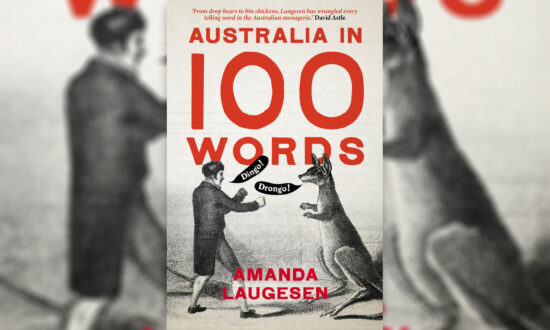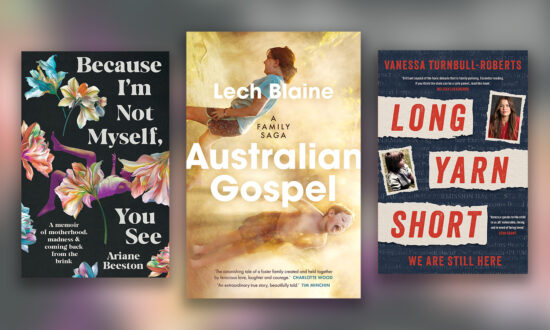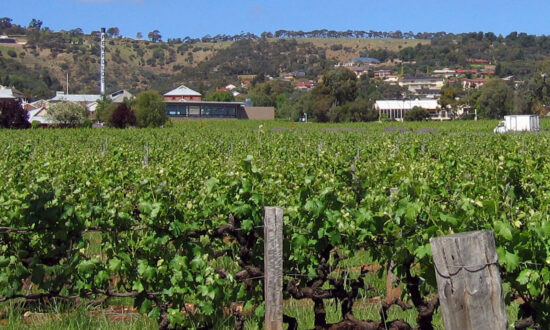Since winning Griffith University’s Josephine Ulrick Poetry Prize in 2004 and the Arts Queensland Thomas Shapcott Poetry Prize the following year, Brisbane poet Nathan Shepherdson has gone on to publish eight books of poetry and establish himself as a dynamic and singular voice in Australian poetry.
Now comes his much-anticipated ninth volume of poetry, Axolotl Waltz, and it’s a cracker – rich with precisely drawn visual images communicated via sparse, exacting prose that leaves an unquestionable imprint on the reader.
On the cover is a painting by fellow Brisbane creative, painter Arryn Snowball, called Continuum 22. It’s an interestingly modern choice of cover art by a writer who not only has a long collaborative relationship with Snowball but is himself a wordsmith whose prose is daringly sparse and modernist.
According to his publisher, in the 32 poems comprising this book, Shepherdson “grows his own punctuation, turns water into accidental wit, stares at the seeds of random ideas with synthetic light in his eyes”.
“Yet he understands that shadows are the perfect fabric for a new suit or old clothes. It seems the shooting stars he’s looking for have blown their headlights. Although he knows they are out there. There is a quiet darkness he weighs by the gram. He understands you need to throw the thing away in order to keep in. Earnestness is not a tune he can hold.”
While Shepherdson’s prose certainly does not read as overly earnest or, indeed, earnest at all, these are nonetheless poems suffused with a darker underbelly, thematically, stylistically and linguistically.
The language employed and style of wordplay undertaken is simple and plainspoken, often deceptively so, but he uses the basic fundamentals of language and written expression to create poems that contain complex allusions and are dense with meaning.
The collection opens with our heads become glass, a poem that raises more questions than it answers and sets the tone for the pieces to come with its layering of queries and contradictions, one of them upon the other, leading to a final stanza that arrests with its immediacy of both tense and imagery: “this is your flesh / growing over a new bone / about to be broken / by the next thought.”
In william & catherine, which opens with the image of English poet, painter and printmaker William Blake sitting at a table, “shelling commas” alongside his wife, we are gradually made privy to the closeness of their intimate relationship – “fresh commas are an aphrodisiac” – as well as the ways in which his writing informed his visual art as they metaphorically shell the commas, separating the “husk from the kernel,” as “the husks are set aside but not wasted / will be ground down to a binding agent / for use in William’s prints / a secret ingredient milked black / through ducts submerged in millboard catacombs / lost cold inside profound speech”.
They pause in their work to share homemade ale, discussing the wrongs of the world and rearranging “art and poetry as they should be”. We learn, ultimately, that “it took as many commas / to fill an unintended moon / as it did to build a lone thought”.
Artistic figures make several key appearances throughout the collection and among those invoked are William Turner, Albrecht Dürer and Auguste Rodin, of whom he asks, “what if Rodin’s Thinker just stood up / put on a smart suit / walked into the next century / got a job as a government actuary / started work on every likelihood …”
Ever present in Axolotl Waltz are three striking themes and sources of imagery: the body, with its attendant mental and physical elements, punctuation, and the worlds of the visual. The latter is perhaps unsurprising, given that Shepherdson is the son of the late, eminent Queensland painter Gordon Shepherdson and has for some years also been part of an expansive, ongoing collaboration with Snowball.
But the frequent use of imagery that references the fleshly corporeality of the body, the quietude of the mind and, in particular, bones, is noteworthy and striking for its ferocity and its darkly quiet beauty. Perhaps nowhere is this more true than in new life, in which he writes, “… every night we should watch / the baby dormantly dressed / in its soft skull a design / a twitch as muscles are strings / pull instinct to determine / to temperature set the body / of this ember with limbs …”
Also memorable is words coat the object, with its verse, “sleep is damaged at this altitude / all commas are hammered flat for use in its acupuncture / the vertebrae protrude like questions on your back / i walk my fingers one either side of your spine / stop at the point on the neck most likely to break”.
In several of Axolotl Waltz’s best poems – among them when we should remember what is not said, the trawler, running in a landscape of dead poetry and the elegiac, intensely evocative william & catherine – the imagery invoked by Shepherdson merges elements of the physical with the linguistic, frequently referencing punctuation to reveal the pliability and slipperiness of language.

Get InReview in your inbox – free each Saturday. Local arts and culture – covered.
Thanks for signing up to the InReview newsletter.
This is an engaging, highly readable collection written in razor-sharp, highly precise prose that allows a writer to explore, with great clarity and success, means of expression, both visual and written. It ultimately reveals a poet who is, in effect, creating distinctive visual imagery through language with exceptionally carefully chosen words as artfully arranged as any strokes on a canvas.
Axolotl Waltz by Nathan Shepherdson, Puncher & Wattmann, $27.
Support local arts journalism
Your support will help us continue the important work of InReview in publishing free professional journalism that celebrates, interrogates and amplifies arts and culture in South Australia.
Donate Here




